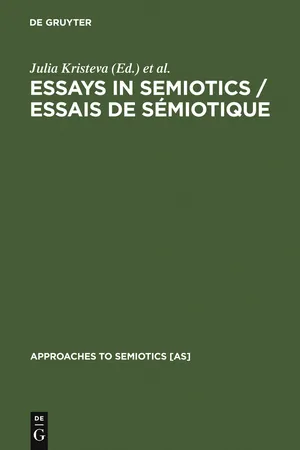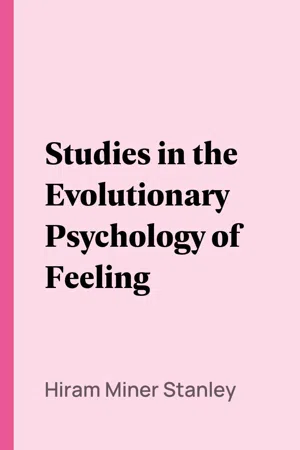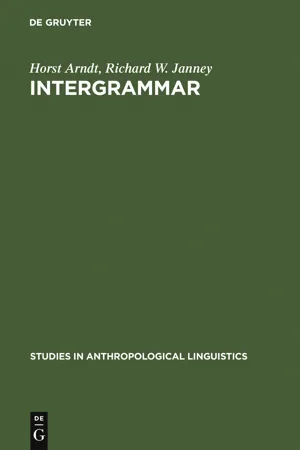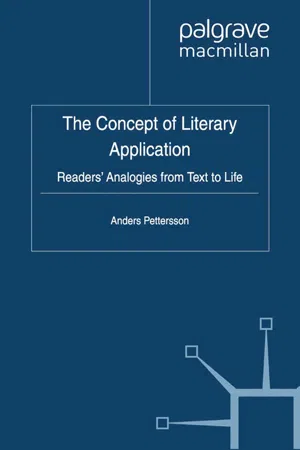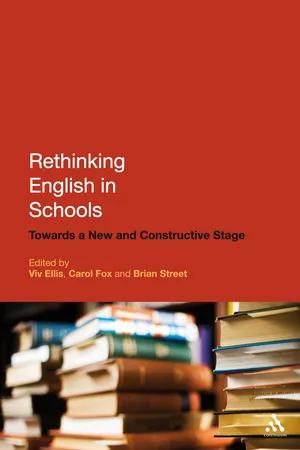Literature
Style
In literature, "style" refers to the way an author uses language to express their ideas and create a unique voice. It encompasses elements such as word choice, sentence structure, and tone, which contribute to the overall aesthetic and impact of the writing. A writer's style can greatly influence the reader's experience and interpretation of the text.
Written by Perlego with AI-assistance
Related key terms
1 of 5
11 Key excerpts on "Style"
- eBook - PDF
Style
An Introduction to History, Theory, Research, and Pedagogy
- Brian Ray(Author)
- 2014(Publication Date)
- Parlor Press, LLC(Publisher)
Style as meaning entails that the decisions writers make regard-ing imagery, metaphors, sounds, length, syntax, and punctuation all contribute to an idea rather than to its mere expression. Style as inven-tive entails that these decisions become part of the process of discover-ing and shaping arguments, and therefore part of the entire composing process—not simply the editing and proofing stages. In a 1980 College English article, John T. Gage grapples with the knotted concept of Style as “at once a linguistic, a rhetorical, and a 3. Barry Brummett’s A Rhetoric of Style analyzes the canon in terms of lan-guage, image, fashion, gender, and a commodity that encompasses all of popular culture in late capitalist societies—Style as excess. For Brummett, Style is an entire system of signification that enables judgment and identi-fication between different socioeconomic classes. Although this definition is ambitious and helpful in understanding the relevance of Style in a broad sense, this book takes more narrow approach, and limits its scope to prose Style, albeit with nods to ways in which other modes of signification have been influential. Style: An Introduction to History, Theory, Research, and Pedagogy 8 philosophical concept,” and explains that it is a contentious term be-cause “It is possible to be satisfied with a definition of Style on one of these levels . . . only to discover that it raises problems in another” (615). 4 Gage’s piece is of particular interest to contemporary stylis-tic studies because he ultimately adopts a flexible position that writ-ing teachers must draw on multiple theories, rather than cling to one. We often see definitions of Style in contest with one another, rather than in cooperation. Consider the central debate mentioned earlier about whether “Style is either separate from invention or . - eBook - PDF
- Julia Kristeva, Josette Rey-Debove, Donna Umiker, Julia Kristeva, Josette Rey-Debove, Donna Umiker(Authors)
- 2010(Publication Date)
- De Gruyter Mouton(Publisher)
18 Little need be remarked about definition A -Style as good writing -except its ubiquity. Randomly picking up articles with 'Style' in their titles in the popular and semi-popular literary journals, one is very likely to find such observations as these: ... the word 'Style' is being used here to refer simply to the felicity of an author's choice and arrangement of words .... 14 Indeed, 'Style' in this sense has come more and more into vogue as a prestigious word to use in books on 'composition' or expository writing, a subject everlastingly and largely unsuccessfully taught to American college freshmen. 15 The alternative to conceiving of good writing as the successful intro-duction of ornaments into the plain sense of an argument is a Platonic monism in which the achievement of the proper form is the content: when a thought is invested with its essential form, Style results. Some of the headier definitions of 'Style' fall into this category. For one who 'has' Style, like Wordsworth, writes Matthew Arnold, Nature herself seems ... to take the pen out of his hand, and to write for him with her own bare, sheer, penetrating power. 1β And Havelock Ellis: Style, among the [language] participants is called Style of discourse and is separated from individual Style (Style B) (p. 97). 13 N. Enkvist, On Defining Style, in: J. Spencer and M. Gregory (eds.), Lin-guistics and Style (London, 1964), esp. chap. III. 14 W. V. Harris, Style and the Twentieth-Century Novel, Western Humanities Review, 18 (1964), 128. F. L. Lucas, Style (New York, 1962), p. 18: Our subject, then is simply the effective use of languages, especially in prose. 15 We are doubtless in for a flood of textbooks with titles like Elements of Style and The Practical Stylist. ie AS quoted in Tenney, op. cit., p. 398. 404 SEYMOUR CHATMAN indeed, is not really a mere invisible transparent medium, it is not re-ally a garment but, as Gounnont said, the very thought itself. - eBook - PDF
- Shimon Bar-Efrat(Author)
- 2010(Publication Date)
- T&T Clark(Publisher)
Since the way language is used determines the nature of the world of the narrative, including that of the characters populating it, and since it is upon the linguistic design that all the meanings embodied in the narrative are dependent, it is necessary to examine the way in which the writers have used their 198 Narrative Art in the Bible medium and how they have exploited the various linguistic possibilities in each case. In other words, we must investigate the Style of the narrative. There are a variety of definitions and views of the nature of Style. The semantic definition, which regards Style as inseparable from meaning, is the one which will be adopted here. Apart from the principal, explicit meaning of words and sentences there are the finer, secondary and connotative ones. The study of stylistic details reveals these nuances of meaning, which may be compared to the overtones in music which, while not carrying the melody itself, determine the timbre of the sounds and therefore influence the character of the piece to a considerable extent. Style has expressive value, it enriches or emphasizes the main meaning reflected in the sentences, while at the same time, because of the emotional charge often transmitted through it, determining the reader's attitude to what is happening. Expressive force exists in all linguistic utterances, in similes, metaphors, etc. (which should not be regarded merely as embellishments), as well as in sounds and rhythm, vocabulary, grammatical forms, syntactical structures and types of sentences. All these aspects of language may be stylistically important. Every linguistic feature, however accepted and trite, should, therefore, be regarded as a stylistic phenomenon. There is no such thing as a sentence without Style, whether it be exalted or simple, clear or vague, rhetorical or mundane. - eBook - PDF
The Stylistics of Poetry
Context, cognition, discourse, history
- Peter Verdonk(Author)
- 2013(Publication Date)
- Bloomsbury Academic(Publisher)
For instance, Rembrandt’s chiaroscuro technique in his painting and Philip Larkin’s repeated use of meto-nyms in his poetry are clearly recognizable phenomenal aspects of their art, which simultaneously convey a deep conceptual significance. In other words, it seems that Style is concerned with the mutually creative interplay between perceptible form and intangible content. All this also implies that in principle, Style is associated with humans either as individuals or as a group linked to a specific context of place, time and cul-ture, and that normally the notion of Style is not applied to entities or things which are not the result of some human action. Therefore, unless it is a case of personification, it seems odd to speak of the Style of, for instance, a gust of wind or a thunderstorm. Significantly, this sense of human consciousness and agency implies that the attribution of a particular Style to some artefact, action or performance entails all kinds of underlying social, cultural and ideological implications (Verdonk 2002: 18–21). Apart from the above tentative ideas about Style, it has so far proved to be very difficult to define it as an abstract concept. Again, this is a problem for non-linguistic and linguistic Styles alike (Wales 2001: 370–2). Indeed, Style as the equivocal interface between form and content, or in stronger terms, Style as the confrontation between a perceived outward appearance and some assumed intrinsic value, has never ceased to trouble the human mind. At the same time, it is ironic that Style is a creation of that very same mind. For a possible answer to the question of how Style ever came into being as an invaluable asset of the human mind, I will now briefly discuss its relation-ship with rhetoric. - Hiram Miner Stanley(Author)
- 2018(Publication Date)
- Perlego(Publisher)
The main secret of the effect of Dante’s Style is as revelation of personality. Art with Dante is the child of life, the product of long and deep-felt experience; and because he is an original reality he achieves in his writings that distinctiveness and distinction which is the truest and highest mark of Style. Again, it is not the lucidity of Sam Weller’s remarks that pleases us, but rather their characteristic flavour. We delight to come in contact with originals, and we relish the characteristic for its own sake, even when ugly or when most unlike ourselves in tendency, and so the modernest of the moderns enjoys Dante, the typical mediævalist. Style is the man. This is the best definition of Style and the best explanation of its peculiar effect. Style is expression of subjective quality. While scientist and philosopher aim to be objective, to justly reflect and interpret outward reality the literary artist aims merely to give a perfect exposition of himself. Style is the literary expression of self-realization. Hence the greatest stylists write to please themselves, and are their own severest critics. Style is timbre, and the best Style is that in which this peculiar tone of the individual mind is most perfectly revealed. A great Style is, then, the expression of a great man, and the consummation of Style occurs when the genius has grown to the highest point of his individuality—and individuality is genius—with corresponding power of expression. Among Tennyson’s poems the most Tennysonian has the greatest Style. When we quote from Wordsworth such lines as,— “The world is too much with us: late and soon, Getting and spending, we lay waste our powers”— and say of them that they are eminently Wordsworthian, that no one else could have written them, we have said the highest word for the Style. In the very largest sense Style is the evolution of the characteristic; development physical and psychical is but a movement toward Style- eBook - ePub
- Graham Hough(Author)
- 2018(Publication Date)
- Taylor & Francis(Publisher)
The most familiar kind of Style-study is the study of individual Style of a single author. The Romantic emphasis on Style as the expression of individual personality has brought this to the notice even of unliterary readers, and post-Romantic depreciation of the expressive outlook has put this particular approach somewhat under a cloud. But there is no need to cross the line from literary study to illicit biography, and in fact the study of individual Style is universally practised on various levels of technical sophistication. A literary work is a verbal structure and even the critic who is primarily interested in the history of ideas or the social implications of literature can hardly proceed beyond generalities without paying some attention to the way in which words are used. It may again be asked therefore how Style-study differs from general literary criticism. The broad answer is that in many kinds of criticism attention to verbal texture may be intermittent, often unaware of itself and often uncritical of its own methods. Many critics begin from biography, from literary history or the history of thought and arrive at close consideration of the literary work itself only at the end. The characteristic feature of Style-study is that it begins from the literary work itself, from words and the way they are combined in a particular body of writing. There is no limit beyond which the student of Style is forbidden to go, but at least he starts from a positive and identifiable point.Whoever begins to look into these matters will immediately be struck by the immense body of such work in the Romance languages and their relative paucity in English. The tendency to separation between linguistic and literary studies in the English-speaking world has meant that comparatively few students of literature have been willing to begin from close consideration of language. Indeed, the consideration of a writer’s language frequently comes as a sort of icing on the cake after every other aspect of his work has been dealt with. The claim of stylistics rests essentially on the proposition that the farthest ranges of a writer’s art, the depths of his emotional experience, the heights of his spiritual insight, are expressed only through his words and can be apprehended only through an examination of his verbal art. Even if this claim is admitted it must also be admitted that there is a genuine difficulty in making the transition to these larger considerations from the particular features of vocabulary and syntax with which the Style student generally starts, and that short-cuts of various kinds are possible. The equipment of the linguist is frequently different from that of the literary student, the one being inclined to positive observation, the other to intuitive perception and speculation; and apart from temperamental differences of this kind there are real difficulties of method. We are most of us incurably inclined to think of ideas as the ultimate reality and words as their merely accidental clothing, and over large areas this view may have considerable justification. An expository writer working within a well-established convention may exhibit nothing particularly individual or characteristic in his way of handling words and may afford very little material for the student of Style to work upon. And even when he is considering an imaginative writer the literary student may often find that he has had very little training in observing the correlation between an intuitively observed literary quality and the specific verbal means by which it has been brought about. It is precisely this kind of training that stylistic study professes to give. But it must be confessed that it was some time before Style-study arrived at this point. - eBook - PDF
Studying Language
English in Action
- Urszula Clark(Author)
- 2017(Publication Date)
- Red Globe Press(Publisher)
Thus in addition to the more formal prop-erties of Style there has been a parallel interest in the psychological and cog-nitive properties of Style, particularly in respect of how readers respond to texts. Many works on stylistics are organised around language use in particular 94 genres, and especially in poetry, prose and plays. This chapter takes a differ-ent approach in that it is organised around key concepts or linguistic cate-gories and the principles of language as discourse. This allows for considera-tion of stretches of text at the level of discourse and discussion of stylistic ‘tools’ across a variety of text types and genres. Sections 3.2 and 3.3 provide an overview of stylistics and the study of it. Sections 3.4–3.6 discuss major aspects of textual organisation and patterning in pieces of text. Section 3.7 explores the principles of the organisation of narrative, Section 3.8 considers representations of speech and thought in narrative, and Section 3.9 investi-gates the use of dialogue in drama. These sections are by no means exhaus-tive of all the methodological approaches in stylistics, but they cover a few in sufficient detail to give you a flavour of what is involved and get you started in in the field. Finally, Section 3.10 provides guidance and advice on research into stylistics. ❙ 3.2 What is stylistics? At its broadest, stylistics can be defined as the study of the Style of written – predominantly literary – texts, as opposed to investigation of the ideas that texts contain, which is the focus of literary criticism. However this is not to say that stylistics ignores ideas. Stylistics looks mostly at how texts are organ-ised, whereas literary criticism focuses on what they convey. - eBook - PDF
InterGrammar
Toward an Integrative Model of Verbal, Prosodic and Kinesic Choices in Speech
- Horst Arndt, Richard W. Janney(Authors)
- 2011(Publication Date)
- De Gruyter Mouton(Publisher)
In a paper appearing in the Sebeok collection, Charles Voegelin (1960) argued that the grammatical description of individual varieties does not wholly account for any of them. Prefigur-ing Labov's (1973) later arguments for pan-dialectical grammars, Voegelin advocated what he called a 'unified grammar,' capable of accounting for all language varieties. Jakobson's (1960) seminal paper on linguistics and poetics appeared in the same volume, in which he introduced his notion that the verbal structures of utterances depend primarily on the functions (e.g., phatic, emotive, conative, poetic, 5.1 Style 147 referential, metalingual) the utterances are intended to realize. This notion has become one of the central assumptions of systemic linguis-tics (cf. Halliday 1973; Berry 1975; Fawcett 1980, 1983), which, according to some of its proponents, analyzes language use at the interface between grammar and stylistics (cf. van Dijk 1983: 22). Despite these hopeful beginnings, linguistics is little further now in certain fundamental respects than in past centuries when Swift simply defined Style as the proper words in the proper places, Buffon claimed le Style c'est l'homme, and Coleridge described Style as the art of conveying meaning with propriety (cf. Cooper 1907: 161, 178, 206). There remains an urgent need for practical means of differentiating between inter- and intrastylistic phenomena and for a general approach that is relevant to investigating actual speech (cf. DeVito 1967: 248; Strevens 1977: 95 ff.). 5.1.1 Style viewed formally DeVito (1967: 249), a formalist, defines Style as the selection and arrangement of those linguistic features which are open to choice. Here, selection refers to a speaker's choices of verbal items (e.g., words) from the possible alternatives available to him in his language, and arrangement refers to the speaker's placement of these items in the possible syntactic patterns available in the language. - eBook - PDF
The Laghukatha
A Historical and Literary Analysis of a Modern Hindi Prose Genre
- Ira Valeria Sarma(Author)
- 2013(Publication Date)
- De Gruyter(Publisher)
222 These patterns may, yet again, be investigated in relation to a multitude of diverse areas — e.g. the choice of words, figures of speech, rhetorical devices, the 220 Cuddon, Dictionary, p. 922 (headword 'Style'). 221 Cf. Günther & Irmgard Schweikle (eds.), Methler Literaturlexikon: Stichwörter tçur Weltliteratur, Stuttgart 1984, p. 423 (headword 'Stil'). 222 Regional or authorial approaches do not offer themselves here because of the large number of writers who are represented in the sample by as little as one to four texts; the historical angle cannot be taken into account because the aim of this book is to lay down the basic artistic principles of the contemporary laghu-kathä; the analyses may however serve as a starting point for further, diachroni-cally comparative, studies which might show how the writers' approaches and Styles have changed over the decades. Style 201 shape of the sentences or paragraphs. 223 For the following investiga-tion these areas have been divided into three groups which also en-compass most aspects mentioned in the critical debate on the laghu-kathä's Style, namely, first of all, language, i.e. the employment of diction and syntax; secondly, modes and tones, comprising for ex-ample areas referred to by critics or writers as 'descriptivity'; and, thirdly, rhetorical devices, including various figures and tropes. Next to aspects of these areas we also often find features men-tioned in the laghukathä debate which are not typically related to Style. The obvious confusion about the general understanding of the term 'Style' reflects the situation in Western literature criticism. - eBook - PDF
The Concept of Literary Application
Readers' Analogies from Text to Life
- Anders Pettersson(Author)
- 2012(Publication Date)
- Palgrave Macmillan(Publisher)
However, we do not necessarily have to attach much importance to the popular understand- ing of what the word “literature” stands for. We can find “literature” defined more authoritatively in dictionaries and encyclopaedias, even 194 The Concept of Literary Application though these definitions, too, are of course fallible. Let us look at a cou- ple of examples. The Oxford English Dictionary defines “literature”, in the relevant sense, as writing which has claim to consideration on the ground of beauty of form or emotional effect 26 This is the corresponding definition in Webster’s Ninth New Collegiate Dictionary: writings in prose or verse; esp : writings having excellence of form or expression and expressing ideas of permanent or universal interest 27 For good measure I also quote the definition in The American Heritage Dictionary: Imaginative or creative writing, especially of recognized artistic value 28 The definitions certainly differ, but they can perhaps be said to agree at least in spirit. They all picture literature as something fine (speaking of it in terms of “beauty”, “excellence”, “value”), and they all contain quite explicit statements of the criteria for qualifying as literature. However, the criteria are vague – literature should distinguish itself through “emotional effect”, “beauty of form”, “ideas of permanent or universal interest”, or suchlike – and this means that the question of the extension of the concept, of what specific texts fall under the concept of literature, remains quite open. (Do Cicero’s letters to Atticus have claim to consideration on the ground of beauty of form or emotional effect? Can Wittgenstein’s Philosophical Investigations [Philosophische Untersuchungen, 1953] be said to express ideas of permanent or universal interest?) It is worth noting that the criteria are also rather diverse. - eBook - PDF
Rethinking English in Schools
Towards a New and Constructive Stage
- Viv Ellis, Carol Fox, Brian Street(Authors)
- 2007(Publication Date)
- Continuum(Publisher)
Our move to talking about 'the aesthetic' is for the same reason that people started talking about 'texts': we see it as a useful way of getting rid of a lot of baggage that the word 'literature' has accrued and so of reshaping the debate around the value of liter-ature. (We do, incidentally, also accept the expanded definition of 'literature' as 'text' and so will readily talk about films, TV programs, hypertexts, etc., as literature, as well as classic novels, poems and plays.) Some might feel that the word 'aesthetic' comes with even more baggage than the term 'literature', since, for literary students anyway, it is often related to an extreme and effete sentimentality and preciousness, most notably evident in the extravagant other-worldliness of pre-Raphaelite poetry. (Bunthorne in Gilbert and Sullivan's Patience is the caricatured epitome of the connotations the term often brings with it.) However, in philosophy and in the (non-literary) arts generally, the term is used in a much more inter-esting and robust way to denote the distinctive ways in which the arts (including literature) work, although beyond that there is little agreement on how one should precisely define it. 74 Rethinking English in Schools How are we using the term 'aesthetic'? There is only space for a few pointers here (see Misson and Morgan, 2006, for an expansion of these): The aesthetic is a way of knowing The aesthetic represents the world to us in certain ways or gives us a particular set of lenses through which to see the world. The crucial feature of this way of knowing is that the rational is not contrasted with or privileged above the emotional, but the intellectual domain is held in tension with the affective. The aesthetic generalizes through representing particulars In aesthetic texts we will usually see a representation of particular experience that somehow seems generally important to us.
Index pages curate the most relevant extracts from our library of academic textbooks. They’ve been created using an in-house natural language model (NLM), each adding context and meaning to key research topics.

